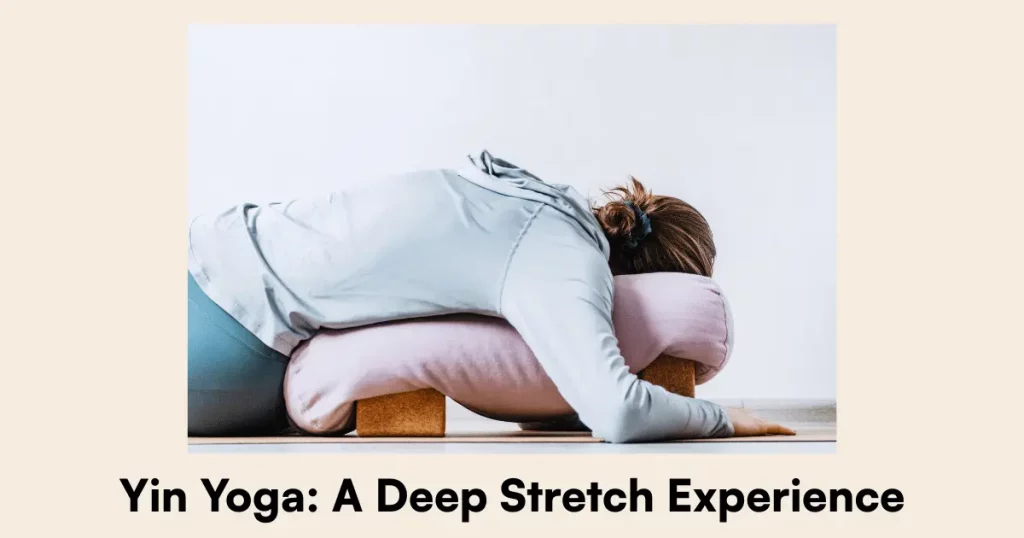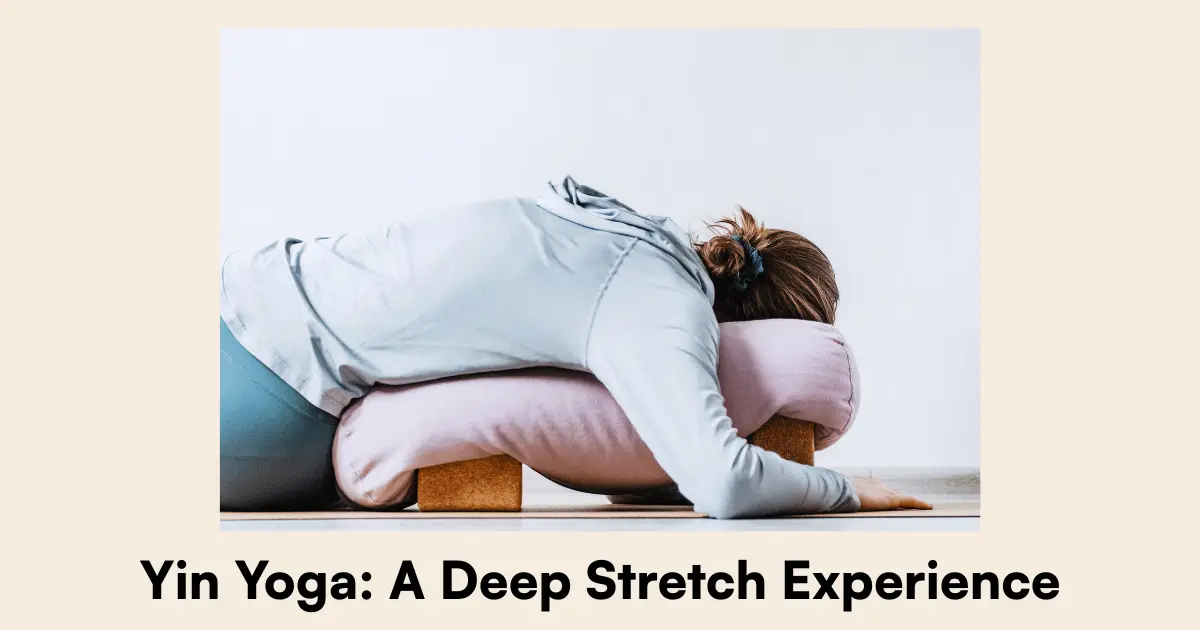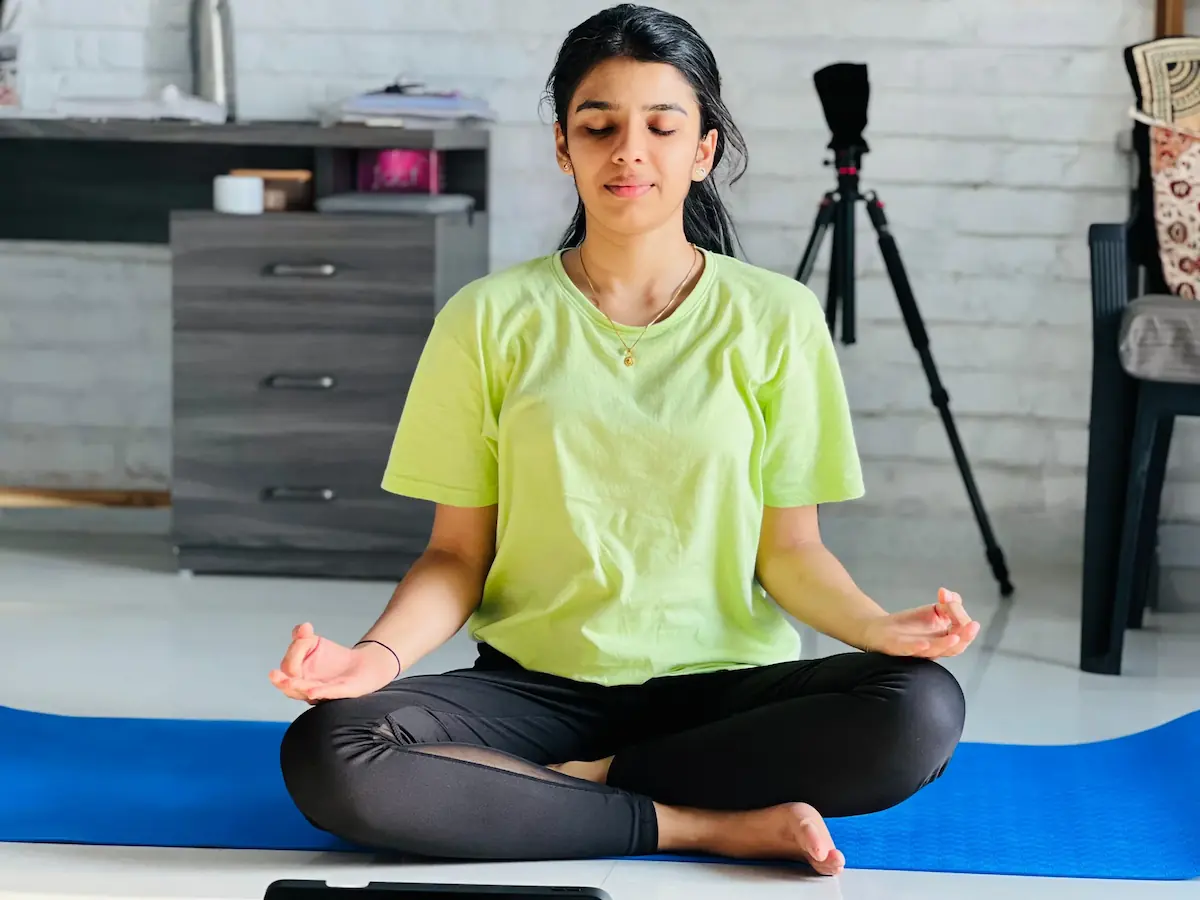Looking for a yoga practice that melts stress and deeply stretches your body? Yin yoga might be your perfect match. But what is yin yoga? It’s a slow, meditative style focusing on relaxation, long holds, and connective tissue health.
This in-depth guide explores yin yoga benefits, introduces five calming yin yoga poses, and compares it with Hatha and Vinyasa styles we’ve covered before. We’ll also dive into its origins, who it suits, and how to start, so you can experience its magic. Let’s dive into this soothing practice!
New to yoga? Begin with our Yoga Poses for Beginners to get started.
What Is Yin Yoga?

Yin yoga, rooted in Taoist philosophy, emphasizes stillness and depth. Unlike dynamic styles, it involves holding poses for 3–5 minutes to target connective tissues like ligaments, tendons, and fascia, rather than muscles. Developed in the late 20th century by Paulie Zink and popularized by Paul Grilley and Sarah Powers, it draws from Chinese medicine’s focus on energy (qi) flow through meridians. So, what is yin yoga in practice?
It’s a quiet, grounding experience—think meditative poses like Butterfly or Dragon, often in cozy studios with soft music or silence. Classes last 60–90 minutes, prioritizing relaxation over exertion. I recall we’ve discussed yoga styles before, and yin’s calming nature often surprises people with its profound effects.
Key Features
- Pace: Very slow—3–6 poses per class.
- Focus: Deep stretching, mindfulness, joint health.
- Setting: Dimly lit studios or home spaces with props like bolsters.
- Philosophy: Balances “yin” (passive) energy with “yang” (active) lifestyles.
Historical Roots
Yin yoga blends ancient Taoist practices with modern anatomy, focusing on the body’s energy pathways. Grilley’s work with skeletal variation highlighted its role in safely stretching deeper tissues, making it a staple for holistic wellness.
The Science of Connective Tissue Health
Yin yoga uniquely targets connective tissues, which support joints and organs but stiffen with age or inactivity. Long holds (3–5 minutes) apply gentle stress, improving elasticity and hydration in fascia—key for mobility. A 2020 Yoga Journal study found a 40% increase in hip flexibility after 12 weeks of yin practice.
Plus, it boosts circulation in joints, reducing stiffness, especially for those with sedentary habits. This focus on deeper tissues sets yin apart, offering a foundation for lifelong joint health.
Yin Yoga Benefits
Yin yoga’s yin yoga benefits are profound, especially for relaxation and tissue health. By holding poses, it releases deep tension, with a 2021 Journal of Alternative Medicine study noting a 35% drop in stress hormones like cortisol. It also enhances flexibility—those long holds stretch connective tissues safely, easing tightness in hips and lower back.
Additionally, it supports emotional calm through mindfulness, as the stillness fosters meditation. So, yin yoga benefits include better mobility, reduced stress, and inner peace, making it a gentle yet powerful practice for modern life.
Additional Perks
- Joint Longevity: Improves range of motion, reducing injury risk.
- Better Sleep: Calms the nervous system, aiding insomnia relief.
- Energy Flow: Stimulates meridians, balancing energy per Taoist principles.
- Emotional Release: Long holds often release stored emotions, per a 2022 Mindfulness study.
Who Benefits Most?
Yin suits stressed individuals, those with tight joints, or anyone seeking calm. It’s beginner-friendly—no strength needed—but athletes love it for recovery. It complements active styles like Vinyasa—see our guide on various Yoga Styles to compare.
Yin Yoga vs. Hatha and Vinyasa
Wondering how Yin yoga stacks up against other styles? Let’s compare it with Hatha and Vinyasa, building on what we’ve explored in our previous guides.
- Yin vs. Hatha: Hatha focuses on static poses held for 5–15 breaths to build alignment and strength, as we discussed in our Hatha guide. It’s gentle but engages muscles more actively than Yin, which targets deeper tissues with longer holds (3–5 minutes). Hatha’s pace (1–2 poses per minute) suits beginners learning basics, while Yin’s meditative stillness is for deep relaxation. Both are beginner-friendly, but Yin is more passive—perfect if you crave calm over strength. Dive into Hatha’s details in Hatha Yoga: The Foundation of All Yoga Styles.
- Yin vs. Vinyasa: Vinyasa syncs breath with movement at a faster pace (3–5 poses per minute), as we covered in our Vinyasa guide. It builds strength and cardio, unlike Yin’s focus on stillness and connective tissue. Vinyasa’s sequences, like Sun Salutations, energize, while Yin’s long holds, such as Dragon, soothe. Vinyasa suits active folks, while Yin is ideal for recovery or stress relief. Learn more in Vinyasa Yoga: Flow and Movement Explained.
Yin offers a unique contrast, balancing the active energy of Hatha and Vinyasa with its passive depth.
Sample Yin Yoga Sequence with Detailed Poses
Here’s a 20-minute yin yoga poses sequence to relax and stretch deeply. Hold each for 3–5 minutes, using props like blankets or blocks for support. Focus on breathing and letting go.
1. Butterfly Pose (Baddha Konasana)
- How: Sit, bring soles of feet together, knees out wide. Lean forward slightly, round your back, rest hands or forehead on a block.
- Benefit: Opens hips, stretches inner thighs.
- Details: Relax your shoulders, let gravity pull you down. Use a bolster under your chest if needed.
2. Dragon Pose (Low Lunge Variation)
- How: Step one foot forward into a lunge, back knee down, hands on floor or blocks. Sink hips gently, feeling a stretch in the front hip.
- Benefit: Stretches hip flexors, improves mobility.
- Details: Keep hips square, breathe into the stretch. Add a blanket under the back knee for comfort. Learn alignment tips in Common Mistakes Beginners Make in Yoga.
3. Thread-the-Needle (Parsva Balasana)
- How: Thread one arm under your body, resting shoulder and ear on the floor. Rest other hand on your back or floor for support.
- Benefit: Releases upper back tension, opens shoulders.
- Details: Relax into the twist, use a bolster under your chest if tight.
4. Supported Fish Pose (Matsyasana Variation)
- How: Place a bolster or rolled blanket under your upper back, lie back, arms out to sides, legs extended or soles together.
- Benefit: Opens chest, counteracts slouching.
- Details: Let your heart lift, relax throat—avoid neck strain. Get setup ideas on how to start a yoga practice at home.
5. Legs-Up-the-Wall (Viparita Karani)
- How: Lie on your back, legs up a wall, hips slightly elevated on a blanket. Arms rest by sides, palms up.
- Benefit: Relieves leg fatigue, calms the mind.
- Details: Close eyes, breathe deeply—perfect for unwinding.
How to Start Yin Yoga
Starting yin yoga is simple and soothing! Set up a quiet space with a mat, bolster, and blanket—dim lights create a cozy vibe. Begin with 15–30 minutes, following a “Yin Yoga” video on apps like Insight Timer or a local class. Focus on surrendering into poses, not pushing. Use props generously to avoid strain. Over time, yin yoga benefits like flexibility and calm will unfold.
Advanced Tips
- Props: Bolsters ($30–$50) and blocks ($10) enhance comfort. Add a timer for holds.
- Timing: Evening sessions maximize relaxation—perfect post-work.
- Mindfulness: Observe thoughts without judgment during holds.
- Progression: Start with 3-minute holds, increase to 5 as you relax deeper.
FAQs About Yin Yoga
Is Yin Yoga Good for Beginners?
Yes! Its slow pace is welcoming—no strength needed.
How Often Should I Practice?
Two to three times a week for 30 minutes helps. Daily 10-minute sessions work too.
Can Yin Help With Chronic Pain?
Yes, by improving joint mobility and reducing tension. Consult a teacher if unsure.
What’s the Difference From Restorative Yoga?
Yin stretches deeper tissues; Restorative focuses on pure relaxation.
Do I Need Props?
They’re optional but helpful—blocks and bolsters support long holds.
Conclusion
Yin yoga offers a profound yin yoga experience, answering what is yin yoga with its focus on relaxation, long holds, and connective tissue health. Its yin yoga benefits—better mobility, stress relief, and calm—shine through yin yoga poses like Butterfly and Dragon. Whether compared to Hatha or Vinyasa, it’s a unique practice for stressed or stiff bodies. So, settle into a pose today and feel the release!
Which pose feels most soothing? Share below or explore more about what yoga is.

